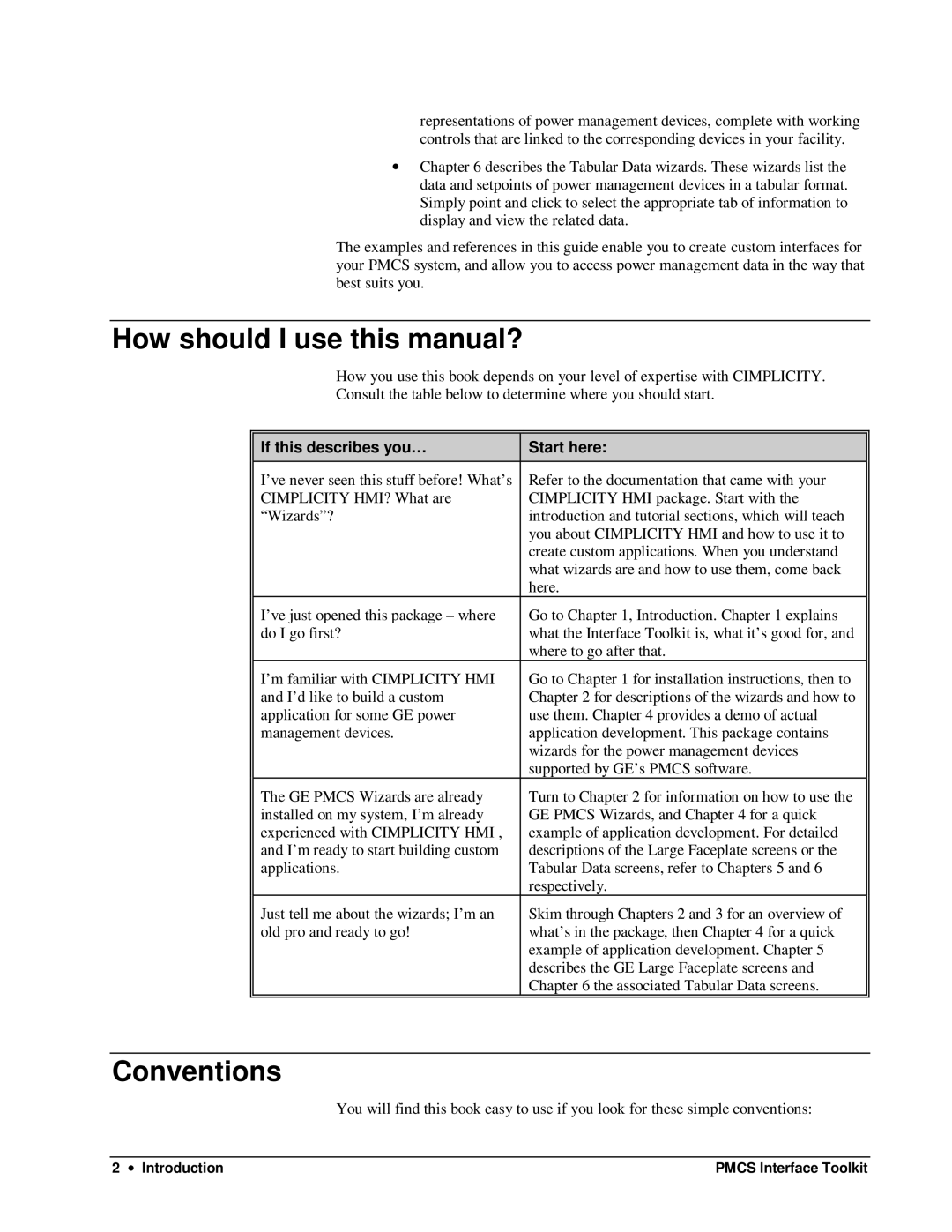
representations of power management devices, complete with working controls that are linked to the corresponding devices in your facility.
∙Chapter 6 describes the Tabular Data wizards. These wizards list the data and setpoints of power management devices in a tabular format. Simply point and click to select the appropriate tab of information to display and view the related data.
The examples and references in this guide enable you to create custom interfaces for your PMCS system, and allow you to access power management data in the way that best suits you.
How should I use this manual?
How you use this book depends on your level of expertise with CIMPLICITY.
Consult the table below to determine where you should start.
If this describes you… | Start here: |
|
|
I’ve never seen this stuff before! What’s | Refer to the documentation that came with your |
CIMPLICITY HMI? What are | CIMPLICITY HMI package. Start with the |
“Wizards”? | introduction and tutorial sections, which will teach |
| you about CIMPLICITY HMI and how to use it to |
| create custom applications. When you understand |
| what wizards are and how to use them, come back |
| here. |
I’ve just opened this package – where | Go to Chapter 1, Introduction. Chapter 1 explains |
do I go first? | what the Interface Toolkit is, what it’s good for, and |
| where to go after that. |
I’m familiar with CIMPLICITY HMI | Go to Chapter 1 for installation instructions, then to |
and I’d like to build a custom | Chapter 2 for descriptions of the wizards and how to |
application for some GE power | use them. Chapter 4 provides a demo of actual |
management devices. | application development. This package contains |
| wizards for the power management devices |
| supported by GE’s PMCS software. |
The GE PMCS Wizards are already | Turn to Chapter 2 for information on how to use the |
installed on my system, I’m already | GE PMCS Wizards, and Chapter 4 for a quick |
experienced with CIMPLICITY HMI , | example of application development. For detailed |
and I’m ready to start building custom | descriptions of the Large Faceplate screens or the |
applications. | Tabular Data screens, refer to Chapters 5 and 6 |
| respectively. |
Just tell me about the wizards; I’m an | Skim through Chapters 2 and 3 for an overview of |
old pro and ready to go! | what’s in the package, then Chapter 4 for a quick |
| example of application development. Chapter 5 |
| describes the GE Large Faceplate screens and |
| Chapter 6 the associated Tabular Data screens. |
|
|
Conventions
You will find this book easy to use if you look for these simple conventions:
2 ∙ Introduction | PMCS Interface Toolkit |
